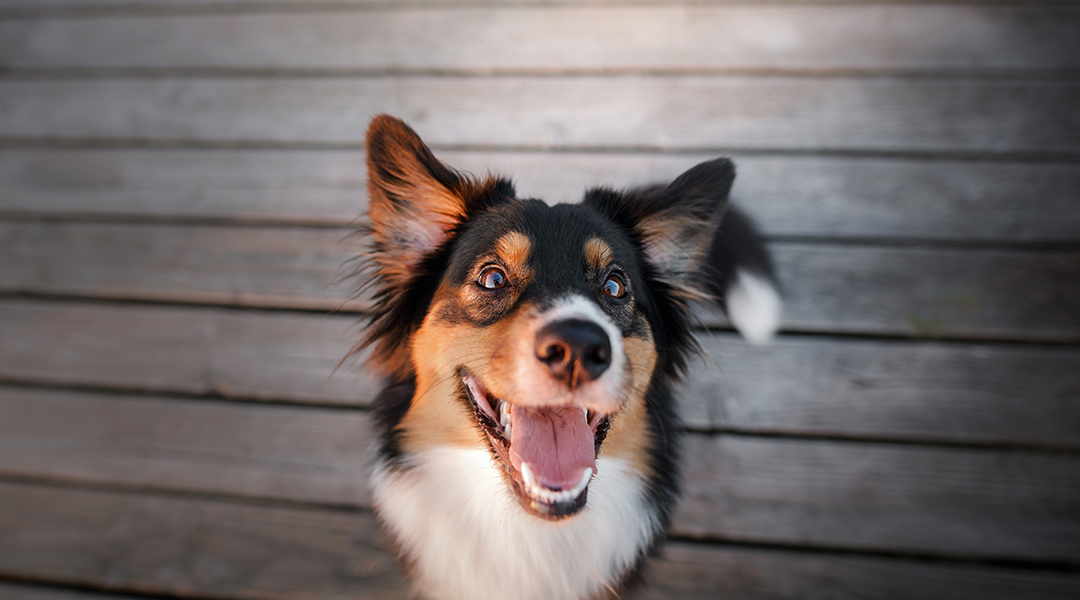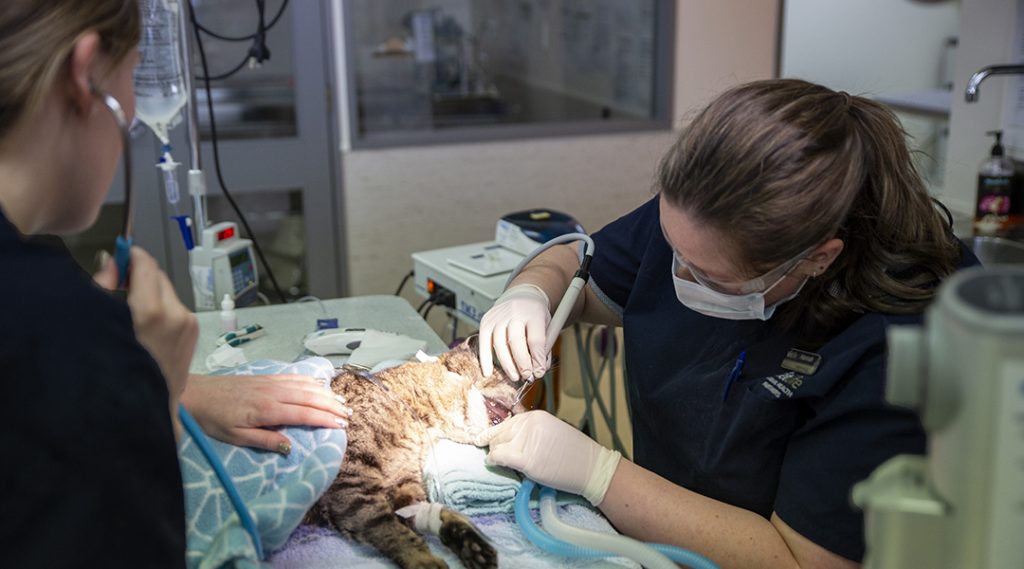
Dental disease is one of the most common problems seen in cats and dogs. Up to 70% of cats and 80% of dogs will show signs of dental disease by 2 years of age. It is therefore vital to start preventative care and learn how to recognise symptoms from the day you get your cat or dog.
There are many symptoms that you can look out for in cats and dogs that may indicate there is a problem going on. The most common complaint that we see is bad breath. This is due to tartar and bacteria present in the mouth. As the disease progresses you may notice drooling, problems eating (such as dropping biscuits) and even behavioural changes. This is due to pain in the mouth. It often comes on gradually so your pet may not show obvious signs right away.
In the case of severe dental disease there can even be effects on the rest of the body and organs. Bacteria can enter the bloodstream through the fragile gums, then circulate to cause infection and disease through the body. For example, we can see heart disease, liver infection and kidney failure. Abscesses can even form.
Dental disease arises initially from plaque formation in the mouth. This then hardens into tartar which is the brown build up you may have seen on your pet’s teeth. The next step is the development of gingivitis (inflammation of the gum around the teeth) in response to the tartar build up. When this occurs, the gum starts to lift away from the tooth resulting in plaque then tartar forming under the gumline. This causes deterioration of the periodontal ligament which is responsible for anchoring the teeth in their sockets, and the alveolar bone which is the bone surrounding the tooth root. As this bone and ligament deteriorates the root becomes loose resulting in either tooth loss, or instability and pain. The pain process starts with gingivitis and continues throughout the deterioration of the ligament, bone, and gums.
There are certain breeds of dogs who we often see as the top offenders for developing dental disease. These breeds include the Schnauzer, Greyhound, Miniature Poodle, Miniature Dachshund, Chihuahua, Cavalier King Charles Spaniel, Shih Tzu, Lhasa Apso, Bichon Frise, Maltese, and Brachycephalics (e.g. Bulldogs) amongst others. In general, smaller breed dogs tend to develop more dental disease than larger breed dogs.
There are a few conditions that are commonly seen in cats and dogs:

Every time your pet gets a full health check the vet will check their teeth. This is the first step in diagnosing dental disease. Where your pet allows, we look at all the teeth by lifting the lips and opening their mouth. Where we see tartar and gingivitis, we will recommend a dental procedure to clean the teeth and look beneath the surface of the gums with a combination of physical exam (probing the pockets) and dental x-ray.
For cats and dogs with no gingivitis we can treat them with at home prevention care. We cannot remove the tartar easily without an anaesthetic, but we can do some things to help prevent further build up.
A dental procedure will always involve a full anaesthetic. We cannot fully assess the teeth and take x-rays without it. The procedure involves the assessment of the teeth, removing the tartar from all the teeth, removing any teeth that require extractions, and polishing the remaining teeth. Removing the tartar from the teeth is done using an ultrasonic scaler which vibrates at extremely high frequencies to remove it. We do this over all aspects of the tooth. This is followed by polishing to smooth them and make it harder for plaque to adhere to their surface.
Extractions can be done in the same procedure as cleaning the teeth. These require local anaesthetic blocks (just like what humans get at the dentist) and require sutures to be placed in the gum (that will dissolve and don’t need removing). Dental x-rays help us to determine which teeth need to be extracted and confirm that the entire root has been removed once the tooth is out. Ideally, we want to get cats and dogs in for a cleaning before extractions are required.
Prevention is vital for all cats and dogs, with the best option being brushing their teeth. Brushing removes the plaque before it can harden into tartar. If your pet will not let you brush your teeth then there are dental diets that can be used. These are complete diets that would replace whatever food your pet is currently eating. Avoiding wet foods will also help their oral health. There are water additives that can help the bacteria levels in the mouth which make it harder for plaque to form and helps freshen the breath. In all though, you can’t do too much to help their teeth, so a combination of the above options is a really good idea.
Brushing your pet’s teeth may sound daunting but with proper preparation and patience you have a high chance of success. It is best to take your time introducing brushing to your pet, so they don’t start defensive behaviours against it. Starting when they are puppies or kittens is the ideal option, but it can be started at any age. The process can take as little as week to start or a few months, it just depends on your pet. Here are some tips for starting the brushing process:
Make sure your pet is comfortable and feels safe and secure before starting. Have lots of treats and rewards on hand for positive reinforcement.
For dogs, dental chews can be a useful addition to their dental prevention plan. They are better than doing no other prevention care so can be used on their own especially in dogs that won’t allow toothbrushing. Just make sure your dog is actually chewing them, not eating them in large chunks or burying them! Toys designed to be chewed and help with teeth can be helpful for some dogs as well. Often, they will have a minty smell to help with bad breath.
In conclusion, dental disease is a highly prevalent and preventable disease in most cats and dogs. Home care and prevention are the best options to keep their mouths healthy. If your pet does develop dental disease, then we recommend that they get a cleaning to help prevent dental pain and the need for extractions. Please ask your vet if you have any questions about your pet’s oral health.